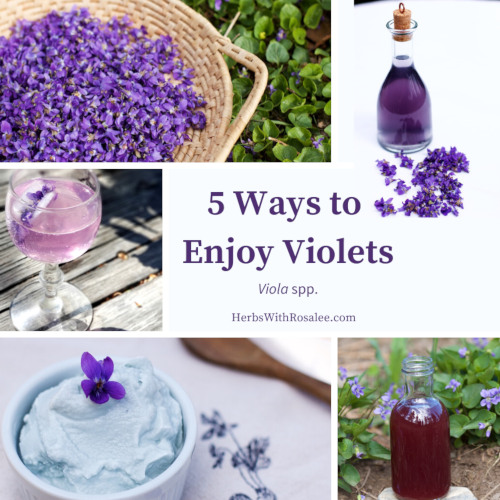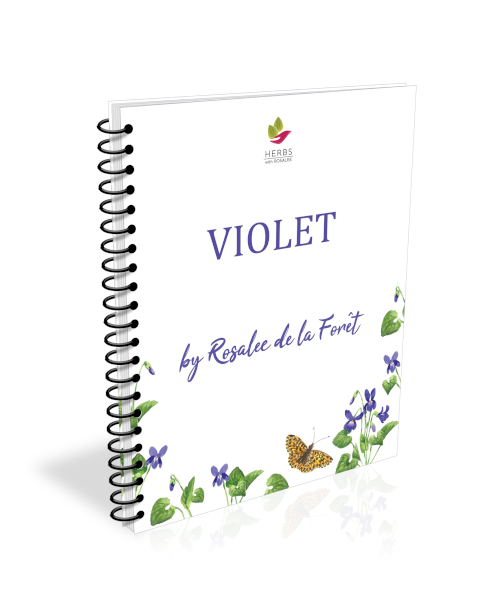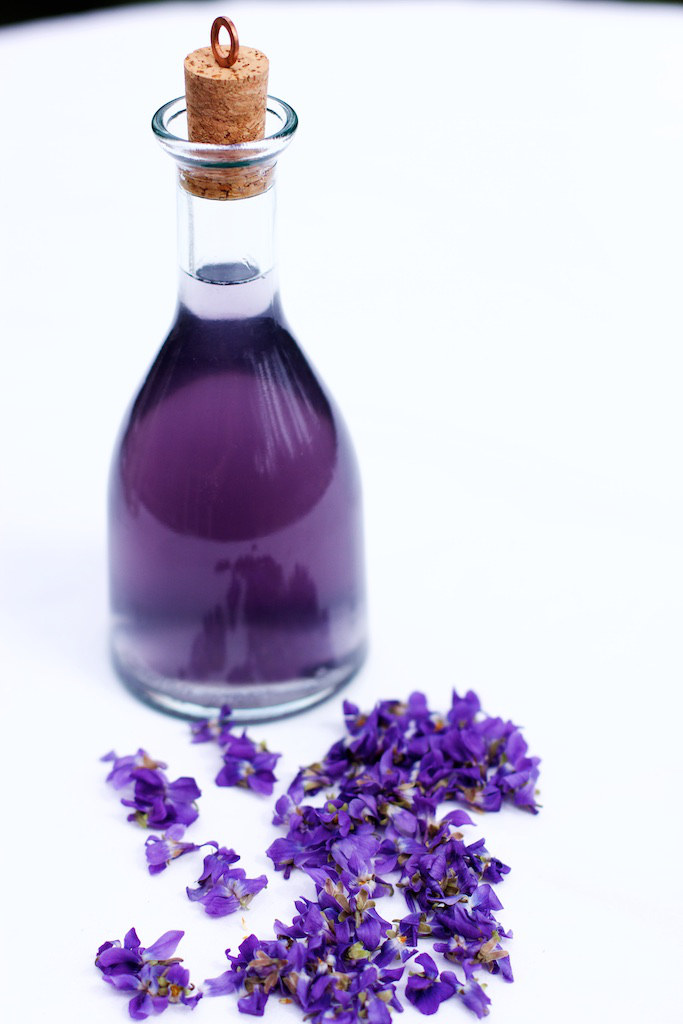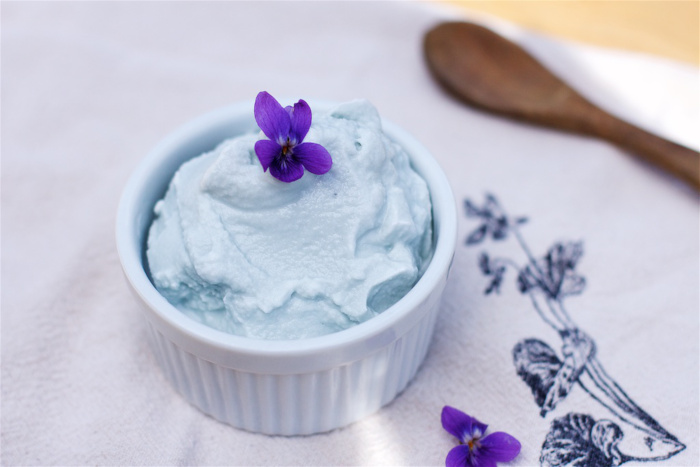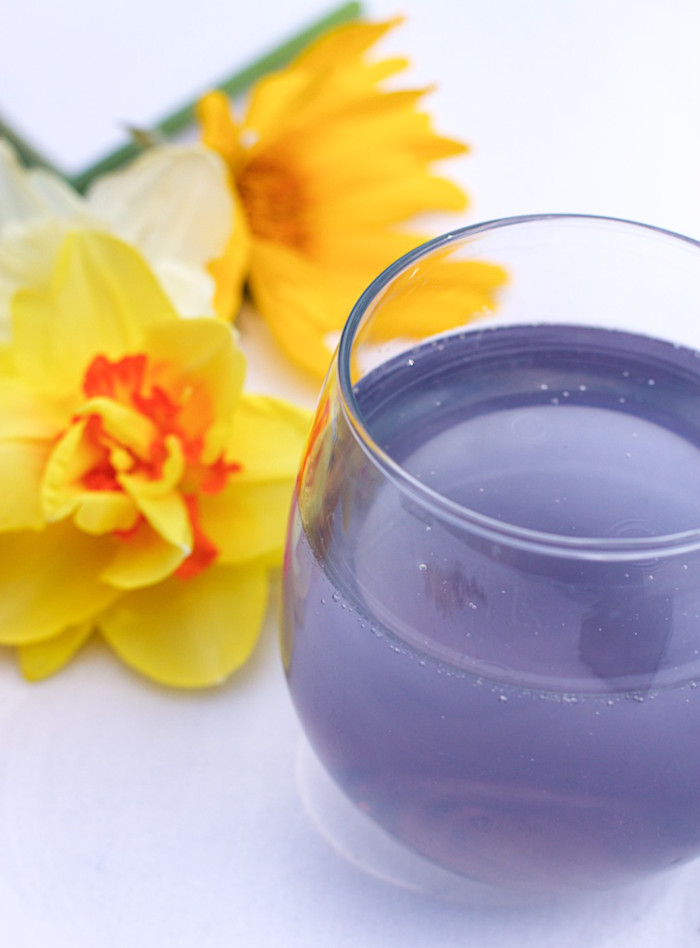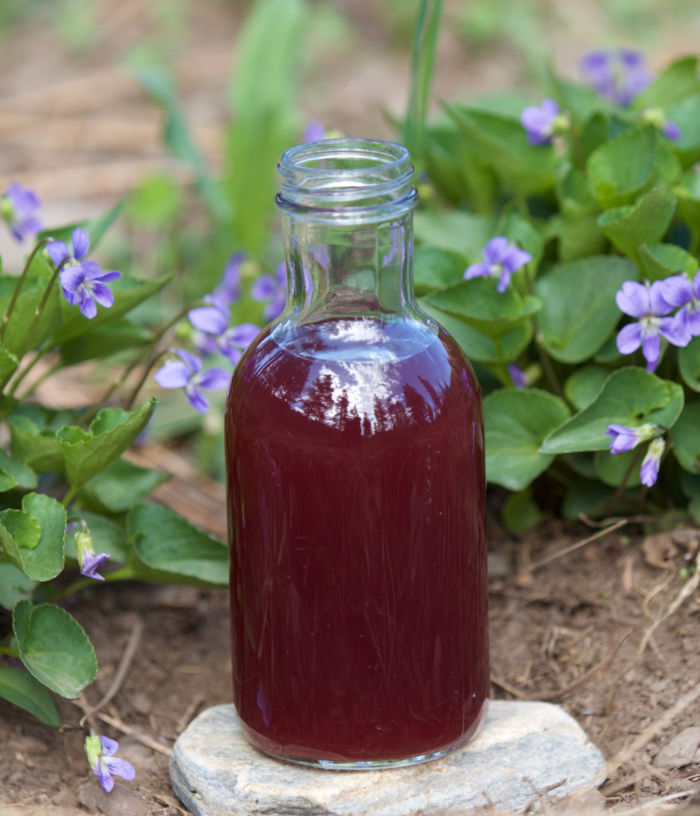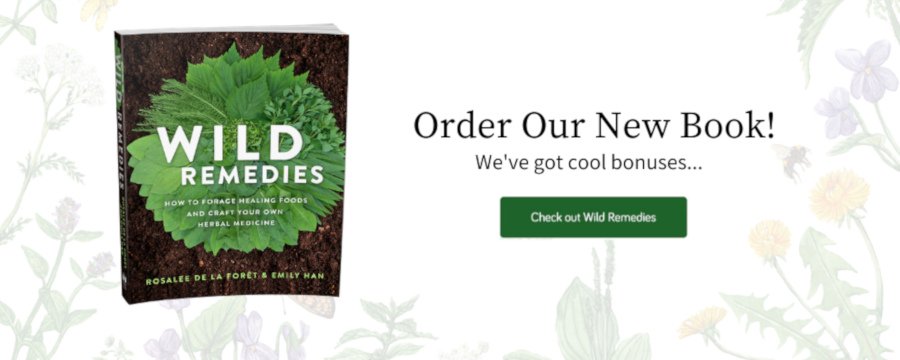Get weekly tips, recipes, and my Herbal Jumpstart e-course! Sign up for free today.

Violet Recipes
Share this! |
|
As violets emerge in spring, their flowers gift our hearts and spirits with joy. That may sound esoteric to some, but you don’t have to take my word for it. Simply spend some time in their presence and you will experience it for yourself. The closer you can get to the violets the better – hurriedly crouching down beside them is no substitute for curling up beside them for a wee while.
Violet has been used as herbal medicine all over the world for thousands of years. It’s known for its ability to move stagnant lymph, soothe dry eyes and skin, and, yes, gladden the heart.
Violet is not only powerful medicine, it’s also beautiful!
Making gem-colored syrups and other lovely treats always brings a smile to my face.
This article shows you 5 of my favorite ways to enjoy violets.
The Violet e-book also shows you how you can rely on the many gifts of violet (Viola spp.) for…
- Stagnant lymph
- Dry hot conditions (from sore throats to dry eyes)
- Symptoms of colds and the flu
- Protecting your skin
- Supporting heart health
- Getting restful sleep
- Cultivating joy in your life
Violet Recipes: 1. Simple Violet Syrup
Making violet syrup is basically making a tea from violet flowers and then adding a sweetener. I prefer to use smaller amounts of honey and then use my syrup up quickly. If you want the syrup to be preserved more long term then you’ll need to add at least an equal amount of honey (or sugar) to the tea. To do this, measure out the amount of liquid you have then add an equal amount of sweetener. So if you have 1 cup liquid, add 1 cup sweetener.
Simple Violet Syrup Recipe Ingredients
- 2 cups fresh purple violet flowers that have their aromatic scent
- 2 cups just-boiled water
- 1/4 cup honey (or sweetener of choice)
- Lemon juice (small amounts, optional)
Simple Violet Syrup Recipe Directions
Place the violet flowers in a pint-sized glass jar and then fill the jar with just-boiled water. Stir well. Cover.
Let sit for 30 minutes (or until the color has drained from the flowers; longer is fine). Once it’s done, strain and discard the flowers (compost).
Now you will have a gorgeous gem-colored tea. The exact color will depend on the color of violets you use as well as the PH of your water. My home water makes my violet tea turn dark blue. If I add a couple drops of lemon juice it turns purple. If I add a lot of lemon juice it turns magenta. If you want to play with lemon juice, go slowly to get the color you want.
Add honey (or sweetener of choice). Stir well. (Adding sweetener may also change the color of your syrup.)
Store in the fridge and use within a few days. For a longer shelf life, measure the liquid, add an equal volume of honey or sugar, and use within a month. Discard if it develops mold.
You can use this syrup in the violet recipes below, or simply drizzle it on whatever your heart desires.
Violet Recipes: 2. Violet Ice Cream Recipe
My husband, Xavier, makes a lot of ice cream and gelato! He does everything from your classic mint chocolate chip to fancier versions like Mango Cardamom Gelato. We use a Donvier ice cream maker, it’s super simple to use. The following violet recipe has become a favorite of ours. It can be made with any home ice cream maker.
The first time we made violet ice cream the color was very faint, almost grey. For this version we added butterfly pea flowers (Clitoria ternatea) to heighten the color. This is completely optional. If not using butterfly pea flowers then simply skip those steps within the directions. This violet recipe calls for raw eggs. If you prefer not to use raw eggs you can omit them but the end consistency won’t be as creamy.
Violet Ice Cream Recipe Ingredients
- pinch of butterfly pea flowers (Clitoria ternatea), optional
- 2 cups coconut milk, divided (500 ml)
- 1 cup violet syrup (see recipe above)
- 2 eggs
Violet Ice Cream Recipe Directions
Infuse the butterfly pea flowers in 250 ml coconut milk on low heat for about 10 minutes or until the color comes through. Strain.
Pour the colored coconut milk into a bowl and add the other cup of coconut milk and the violet syrup.
In a separate bowl slightly beat two eggs. Add them to the milk, mix until well blended.
Refrigerate for an hour and then follow the directions for your ice cream maker.
For more tips on making ice cream see this article here.
Violet Recipes: 3. Kiss the Violets as They’re Waking Up Cocktail
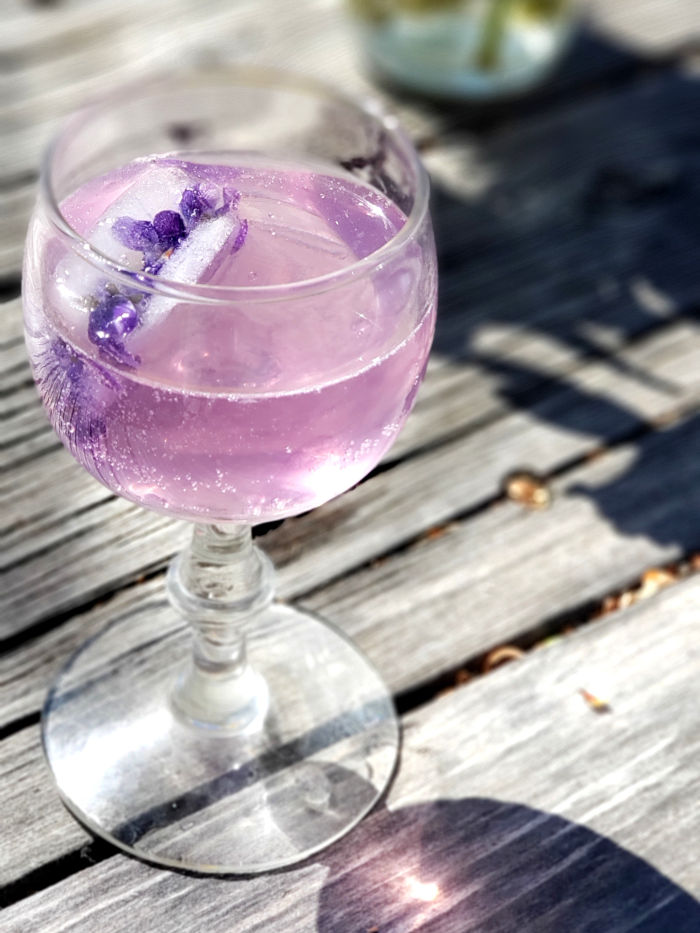
One spring celebration I made this cocktail for friends and it was a huge hit! I named it Kiss the Violets as They’re Waking up in honor of one of my favorite Tori Amos songs, Cloud on My Tongue.
Violet Cocktail Recipe Ingredients
- 1 ounce simple violet syrup (see recipe above)
- 1 ounce vodka OR gin OR tequila
- 2 ounces cold sparkling water (or more to taste)
- Generous squirt of fresh lime juice
Violet Cocktail Recipe Directions
Combine in a cute glass. Add a violet flower ice cube if desired.
Cheers!
Violet Recipes: 4. Violet Faux Soda
Violet Recipes: 5. Violet Vinegar
The following Violet Vinegar recipe is an excerpt from our book, Wild Remedies: How to Forage Healing Foods and Craft Your Own Herbal Medicine.
For more about violet, including violet recipes, pick up your copy today. It’s available wherever books are sold.
Once you’ve got your book, be sure to get your bonuses here.
You can use any species of edible Viola for this recipe, but those with deep purple blossoms will make the most exquisite jewel-colored vinegar. Drizzle violet vinegar over fruit and salad greens, or drink it in the form of an oxymel or cocktail.
Yield: 2 cups
Violet Vinegar Recipe Ingredients
- 1 cup fresh violet flowers
- Up to 2 cups champagne vinegar or white wine vinegar (at least 5% acidity)
Vinegar Violet Recipe Directions
1. Put the violets in a pint jar. Pour in enough vinegar to fill the jar and submerge the flowers completely.
(You might not use the entire 2 cups.)
2. Cover the jar, preferably with a glass or plastic lid (vinegar will corrode metal). If using a metal lid, place parchment paper between the lid and the jar. Label the jar.
3. Let the jar sit at room temperature, out of direct sunlight, for 1 to 2 weeks, shaking it daily. The longer you let it infuse, the stronger the flavor will be.
4. Strain the vinegar into a clean jar with a nonreactive lid. Store in the refrigerator for up to 1 year.

Rosalee is an herbalist and author of the bestselling book Alchemy of Herbs: Transform Everyday Ingredients Into Foods & Remedies That Healand co-author of the bestselling book Wild Remedies: How to Forage Healing Foods and Craft Your Own Herbal Medicine. She's a registered herbalist with the American Herbalist Guild and has taught thousands of students through her online courses. Read about how Rosalee went from having a terminal illness to being a bestselling author in her full story here.
